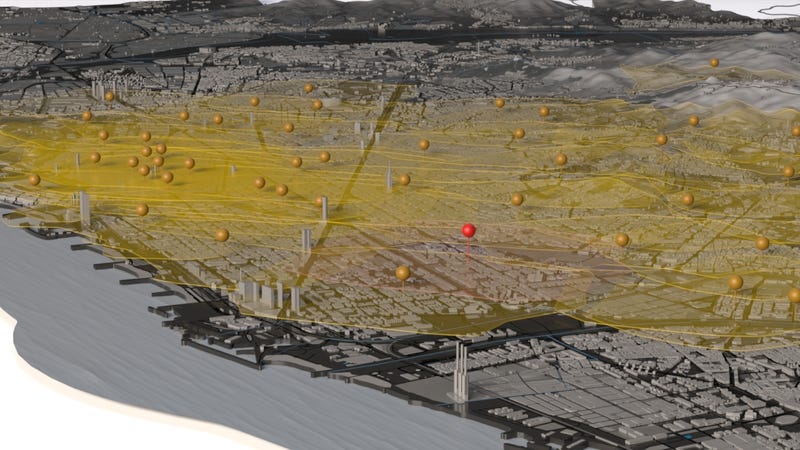Visualizing Smarter Cities with Digital Twins
Seeing the power of virtual, simulated cities for better urban development and interactive citizen engagement.
Last week, I peeked into the wealth of knowledge found in extensive and open geospatial data from satellites. Shifting focus from the sky to the streets, we’re analyzing our cities in greater depth than ever.
Digital twins have traditionally been used in manufacturing and industrial processes to simulate complex physical systems, like airplane engines and factory floors. Now, advancements in remote sensing, IoT devices, cloud computing, and AI are enabling us to collect and analyze vast amounts of urban data, creating increasingly detailed and dynamic virtual replicas of entire cities.
What was once imagined by early simulation games like SimCity and Cities: Skylines, is now empowering urban planners, architects, and policymakers; digital twins are transforming how we understand and interact with our urban environments with a powerful perspective to test build scenarios, optimize infrastructure resilience, and improve overall citizen quality of life.
Digital Twins in Action: Barcelona & Ottawa
Barcelona is leading the charge in Europe with its pioneering digital twin. The Barcelona Supercomputing Center (BSC-CNS) is using this virtual replica in its first phase to experiment with hospital and metro station placements, as well as traffic strategies to improve air quality. The project has ambitious plans to ultimately optimize the design of public policies that can be applied to any city in the future.

In Canada, Ottawa showcases how digital twins are reshaping urban planning and management into a dynamic, data-driven process. By using enhanced 3D GIS visualizations, the city is striving to make complex spatial data more accessible and relatable to both the public and decision-makers.
This increased transparency offers the predictability and clarity needed to navigate large-scale infrastructure projects with greater efficiency and confidence. Additionally, routine open communication with the public about design proposals, zoning regulations, and potential construction impacts paves the way for smoother project execution and community buy-in.
Converging Physical and Digital Realities
The potential of digital twins extends far beyond urban planning. Enhanced real-time modeling and simulations, fueled by AI’s progress, promise to revolutionize various sectors, from optimizing traffic flow and energy systems to improving disaster preparedness and fostering citizen engagement. The AI for Energy Report 2024 from the US Department of Energy highlights AI’s crucial role in modeling complex systems like power grids, essential for our transition to renewable energy sources.
Digital twins are part of a broader shift towards immersive technologies like Virtual Reality (VR), Augmented Reality (AR), and the metaverse, collectively known under ‘Extended Reality (XR)’—these technologies are changing how we experience and understand the world around us, blurring the lines between reality and the digital realm.
A further emerging concept of ‘virtual twins’ is marked by progressively advancing computational power to simulate and interact with hypothetical future scenarios, allowing us to more readily anticipate, plan and respond to potential challenges and opportunities faced by growing cities.
The Metaverse Meets Urban Planning in Saudi Arabia
Saudi Arabia's futuristic city, Neom, exemplifies this convergence. It's investing in a digital twin envisioned as a metaverse, growing in tandem with the physical city. Virtual visitors can participate in crowdsourcing the city's design, like customizing apartment colours, creating an interesting "human-centric" digital approach to urban development.
Collaborative virtual spaces offer transformative potential for public participation and city planning on a global scale. However, it also underscores the critical need to address concerns around trust and data privacy in large-scale data sharing. Robust safeguards, cohesive policies, and ongoing public dialogue are essential to ensure responsible and ethical use of individual and ever more diverse sets of public data.


